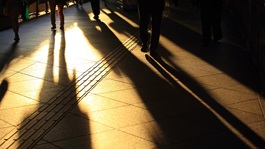The Federal Court recently found claims of a patent relating to freestanding room dividers made of layers of material in a “honeycomb lattice design” invalid and/or not infringed. The plaintiff, Molo Design Limited, alleged that co-defendants Chanel and Procédés Chénel (the defendants) infringed claims of Canadian Patent 2,527,927 (927 Patent) through use of blocks of tissue paper with a honeycomb lattice design in its window displays. The majority of the patent’s claims were held invalid for anticipation or obviousness. The defendants were found not to infringe the only valid independent claim.
Background
The 927 Patent describes articles of flexible furniture with a core made of material connected together in an offset pattern to produce a honeycomb lattice design when the layers are expanded, with a pair of supports on either end to provide rigidity to the core to provide a freestanding wall.
Molo alleged this patent was infringed by tissue paper blocks that pulled apart to produce a honeycomb lattice in window displays.
Claims construction and infringement
The central issue was whether the defendants’ tissue paper blocks had a “pair of supports” as claimed in the 927 Patent. The defendants’ tissue paper blocks had one sheet of tissue paper at either end of the block of tissue paper. Molo alleged these terminal sheets of paper constituted a “pair of supports.”
The court concluded that the “pair of supports” must be made of different, and more rigid material than the material used to produce the honeycomb lattice because the “pair of supports” had to provide rigidity to the core. The court did not accept that a support could provide rigidity to the core without being made of a material that is itself more rigid than the core, rejecting evidence from Molo’s expert.
Accordingly, the defendants were found not to infringe Claim 1, or any other asserted claims of the 927 Patent as they all depend from Claim 1, which contained a “pair of supports” as an essential element.
Validity
A common theme of the court’s findings on validity was that the 927 Patent claimed an article rather than a use. This expanded the scope of prior art considered.
Anticipation
The court held that a prior patent for a foldable curtain anticipated the majority of claims in the 927 Patent. Molo attempted to distinguish the curtain by arguing the subject matter disclosed was intended to be used as a fixture and not “flexible furniture, including a partition.” The court rejected this argument because the 927 Patent claimed an article rather than a use. The foldable curtain described in the prior patent was an article capable of acting as a partition and therefore fell within the scope of the claims in the 927 Patent. It did not matter it may have had a different intended use.
Also of note, the inventors’ own submission to an international design competition from more than one year prior to the 927 Patent’s filing date was also anticipatory of Claim 1, and several dependent claims flowing from Claim 1. Molo sought to rely on the “reasonable experimentation” exception to prior disclosure established in Conway v Ottawa Electric Railway Co (i.e., that limited experimentation in public that is necessary to complete the invention does not constitute disclosure).
The court clarified that the disclosure had to be for the purposes of “perfecting and testing” and the fact a disclosure contains experimental subject matter is not sufficient on its own to justify applying the Conway exception. The Conway exception did not apply to the competition submission because there was no evidence it was for the purpose of experimentation and improving the invention.
Molo’s expert attempted to argue that photographs disclosed in the design competition submission disclosed prototypes that were not freestanding as contemplated in the 927 Patent. Molo’s expert stated “he was informed” of this information. The court rejected this argument on the basis that anticipation must be assessed “on the face of the document as it would be understood by the POSITA” and external evidence, such as that obtained by Molo’s expert, should not be considered.
Obviousness
The court identified an inventive concept that mirrored the language of Claim 1. In view of all of the prior art and common general knowledge, the court concluded that all claims other than claim 3 and claims that further depend from it are invalid for obviousness.
Of note regarding its obviousness analysis, the court opted not to consider the secondary factors of commercial success and industry recognition. The court acknowledged the evidence demonstrated significant commercial success associated with Molo’s products. However, the court noted there was no evidence connecting that commercial success to the inventive concept of the 927 Patent.
Insufficiency and Ambiguity
The defendants’ allegations of insufficiency and ambiguity were primarily directed towards “wall” or “partition” being undefined. The Federal Court dismissed these allegations on the basis that a POSITA with a “mind willing to understand” would be able to attach meaning to these terms regardless of whether they were explicitly defined.
Conclusion
This case highlights:
- The distinction between claims to an article and claims to a use in the context of allegations of anticipation and obviousness. The court highlighted that claiming an article rather than a use broadens the scope of the claims. Practically, this could create a tension since a broader claim may be beneficial from an infringement perspective but may capture more prior art that may be harmful from a validity perspective.
- The limitations of the Conway experimental exception to disclosure, reinforcing a cautious approach to public disclosure before filing.
- Extrinsic evidence cannot be considered when considering a prior publication for the purposes of anticipation.
- The importance of a connection between commercial success and the inventive concept in respect of obviousness.




